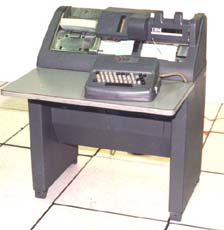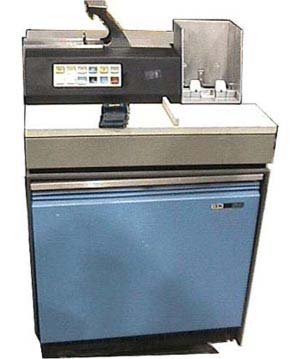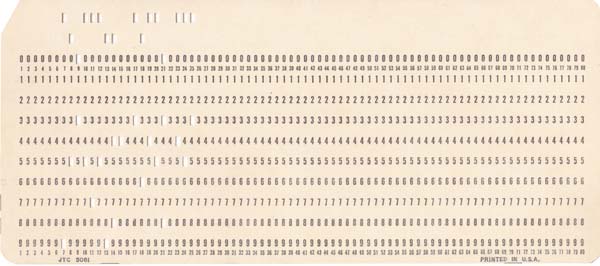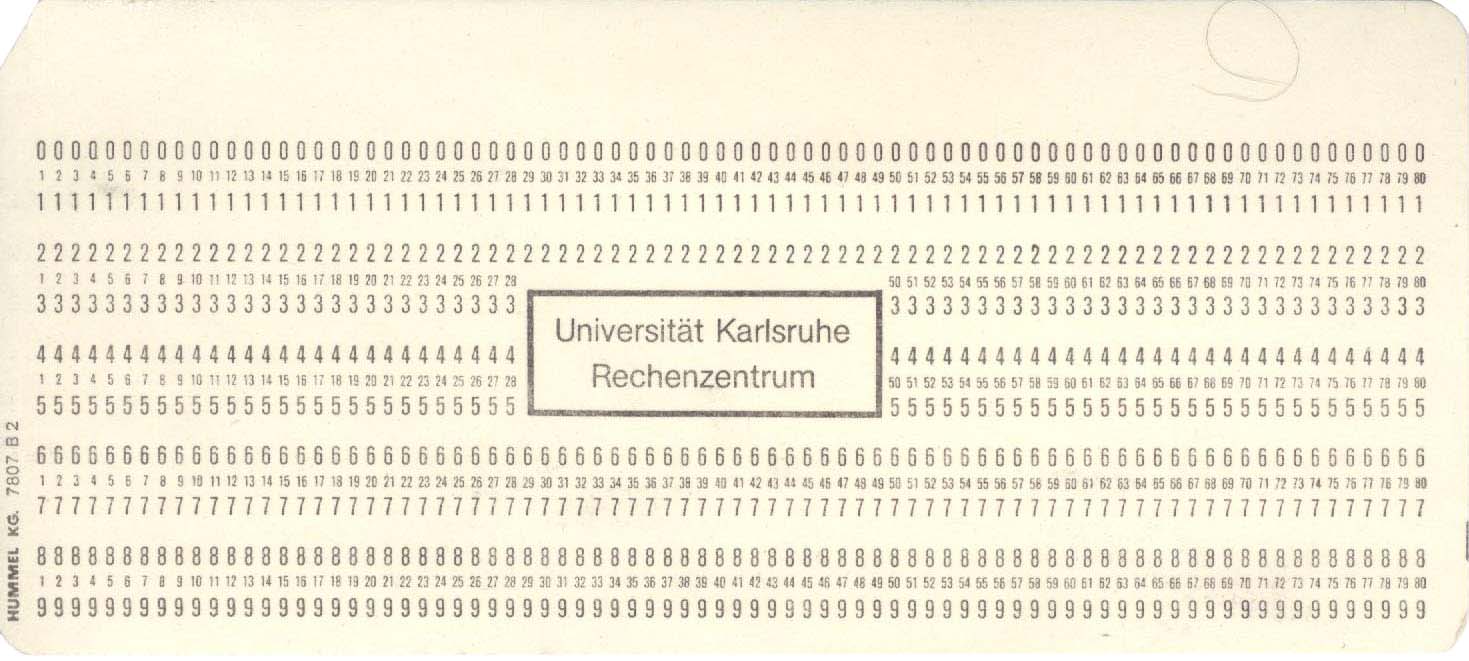IBM Punch Cards



Here is a card punched on a keypunch that either had no interpreter, or a
broken one, or whose ribbon was dry.

Here's another customized card (without punches), this one from the
University of Karlsruhe (Germany) Computer Center, courtesy of Michael
Hartmann, Technische Universität München:
- Early Punch Card Machines (onsite).
- Hollerith 1890 Census Tabulator (onsite).
- Early Punched Card Equipment, 1880-1951, Emerson W. Pugh and Lars Heide, IEEE Global History Network Significant Technological Achievement Recognition Selections (STARS).
- The IBM Punched Card (IBM history archive)
- “Do Not Fold, Spindle, or Mutilate”: A Cultural History of the Punch Card, Steven Lubar, Journal of American Culture, Volume 15, Issue 4, pp.43-55, Winter 1992.
- Punched Cards - A brief illustrated technical history, Douglas W. Jones, University of Iowa.
- Punched Card, Wikipedia.
- Computer programming in the punched card era, Wikipedia.
- The IBM Punched Card, IBM 100, accessed 26 December 2019.
Translations of this page courtesy of...
| Language | Link | Date | Translator | Organization |
|---|---|---|---|---|
| Bulgarian | български | 2023/08/31 | Kerstin Schmidt | https://admission-writer.com/ |
| Czech | Čeština | 2023/08/17 | Vladyslav Byshuk | Владислав Бишук | studycrumb.com |
| Finnish | Suomi | 2023/08/31 | Kerstin Schmidt | https://pro-academic-writers.com/ |
| French | Français | 2023/08/25 | Kerstin Schmidt | writemypaper4me.org |
| German | Deutsch | 2023/08/17 | Vladyslav Byshuk | Владислав Бишук | skyclinic.ua |
| Italian | Italiano | 2023/08/25 | Kerstin Schmidt | justdomyhomework.com |
| Norwegian | Norsk | 2021/10/31 | Stian Skjelbred | Strøm24.no |
| Polish | Polski | 2023/08/17 | Vladyslav Byshuk | Владислав Бишук | studybounty.com |
| Portuguese | Português | 2023/08/31 | Kerstin Schmidt | https://writemyessay4me.org/ |
| Russian | Русский | 2021/12/28 | Anonymous | E-ITA |
| Spanish | Español | 2023/08/25 | Kerstin Schmidt | prothesiswriter.com |
| Swedish | Swedish | 2021/10/31 | Peter Torman | https://volantaroma.se/ |
| Ukrainian | Українська | 2021/09/16 | Ann Sole | PapersOwl |
